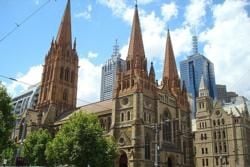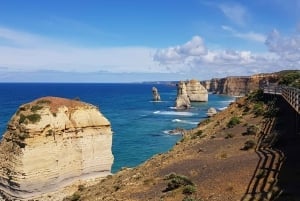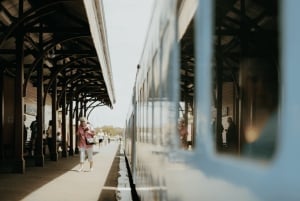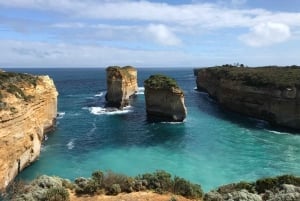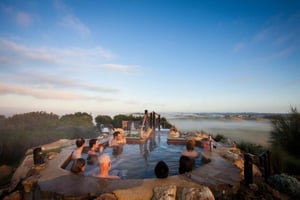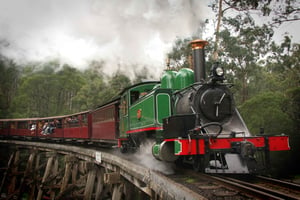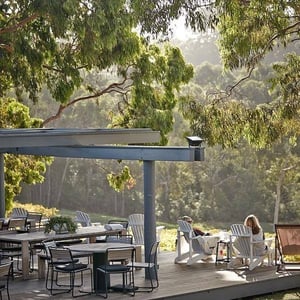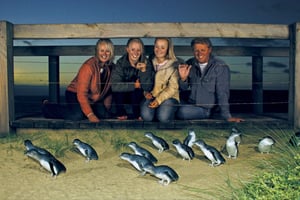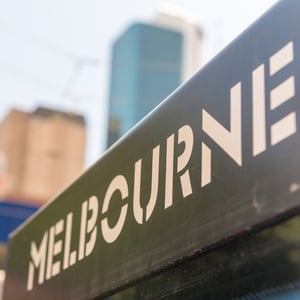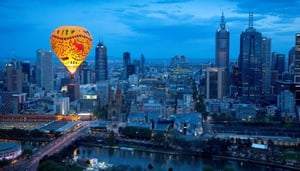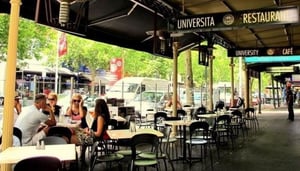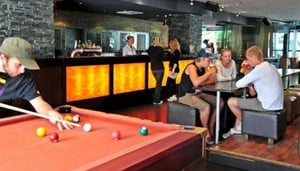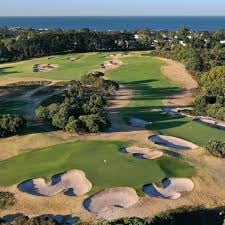Churches of Melbourne
Book Top Experiences and Tours in Melbourne:
If youʻre booking your trip to Melbourne last minute, we have you covered. Below are some of the top tours and experiences!- From Melbourne: Ultimate 2-Day Great Ocean Road Tour
- Melbourne: Mornington Peninsula Wine Day Tour
- Melbourne: Puffing Billy & Healesville Sanctuary Scenic Tour
- From Melbourne Grampians National Park Kangaroos Guided Tour
- Drysdale: Restaurant Train Dining Experience
St James was the city’s first Anglican cathedral and opened in 1842 on the corner of Collins and Williams Streets, making it Melbourne’s oldest church. It was later moved to where it sits today opposite Flagstaff Gardens. The only memory of the earlier location now is St James Lane. Charles La Trobe laid the first foundation stone in 1839, just four years after the city had begun. It is one of the only pre-gold rush buildings still in existence in Melbourne.
The grand and stately St Paul’s Cathedral was consecrated in 1891 and superseded St James as the Anglican Cathedral for Melbourne. It sits on one of the most well-known corners in Melbourne on Flinder’s Street. St Paul's was built in a style called Gothic transitional. The wealth of the times of the gold-rush is noticed in the quality of the building materials and the gold leaf on the frescos at the front of the church and in the Lady Chapel. St Paul’s, rather than being dark and oppressive, or museum-like, as some older churches can be, feels rich in light and feels ‘alive’.
St Paul’s is a superbly built church and one that stands out in the city because it is made from Waurn Ponds limestone and Barrabool Hills sandstone, rather than the more common local Bluestone. Within St Paul’s, you can take a moment to light a commemoration candle.
Here, you can attend the Alpha Course endorsed by Bear Grylls. The sophistication of the Cathedral seems incongruous to the idea of ‘Man vs Wild’, but finding a place to refresh and have quiet solace away from the noise and activity out on the streets may well be a good start to spiritual survival and finding a way out of life’s anxieties. Along with regular services, a Tuesday night healing service is open to any wanting to attend for prayer.
The first Catholic Church in the city was St Francis’ church on the corner of Elizabeth and Lonsdale Streets, and it is still a popular place for the faithful. Designed by Samuel Jackson, it later had a tower added to house a bell brought from Dublin.
The Gothic St Patrick’s Cathedral however, became the more impressive Catholic Church. It was commissioned in 1851 but not officially consecrated until 1897. The Bluestone structure stands grandly in a high part of the city, on the Corner of Gisborne and Albert Streets.
Walk around the outside of the cathedral to the eastern side entrance and as you look up you may notice one of the gargoyles has a familiar face. A new addition was carved by stonemason, Tom Carson and was inspired by a previous State premier, Jeff Kennett, and there he is immortalised to pour forth rainwater from his wide open mouth.
In Collins Street, the Scots Church uses a variety of stone, with highlights in Kakanui, New Zealand stone. In the early years of Melbourne, the church spire was the highest structure seen in the city. Scot’s Church was where Dame Nellie Melba, the world famous soprano, sung in the choir before her rise to the international operatic stage. Her funeral took place at Scot’s Church in 1931. With thousands attending many were unable to get into the church and crowded around outside.
On the opposite corner of Russell Street and Collins Street is St Michael's Uniting church, designed by Joseph Reed in the Lombardic style. He also designed the Melbourne Town Hall and the Exhibition Building. The church minister at the time had wanted a building that was practical and because of this, the internal design was more in line with a theatre with a sloping floor.
Sixteen members met in the early years of the city to build the first Baptist church, starting with a chapel that was soon too small. The present church known as the Collins Street Baptist Church, was built in 1865 in a Classical style, designed by the popular Joseph Reed. He took a popular trend of the time and leaning on neo-Greek influence, placed four Corinthian columns at the entrance.
Another of the historic churches in the city is noted when taking the vintage tram route and it stands out as something unusual in a modern Australian city. It is the small Welsh Church wedged between modern buildings. Today it has a multi-cultural congregation but they still consider the Welsh language and traditions as important. Services are held twice a month in Welsh and at least twice in a year they hold a singing festival (Gymanfa Ganu) with hymns sung in both English and Welsh.
The German Lutheran Church also continues valuing the heritage from earlier days of immigration. It is found on Parliament Place just a few steps from the neighbouring enormous St Patrick’s Cathedral. Inside this fairly small Lutheran church is a beautiful organ played since it was installed in 1874 and still in use. The interior is preserved with a timber ceiling and maintained in its original style.
Opposite the central library the cross cultural church on Swanston Street dates back to 1865. It was originally the Church of Christ, but today the name reflects the changes in nationalities coming to reside in Melbourne, and in particular this church has wanted to welcome Asian and other students from many parts of the globe. It has a growing, young and thriving congregation.
An overview of the city’s churches would not be complete without including a newcomer. A fast growing and contemporary church called Planet shakers, draws around 6,000, mostly young people, each week. They use a variety of auditoriums to accommodate their flock. Four services are held at the Dallas Brooks Centre each Sunday. Music is modern rock, performed by skilled bands and sermons are upbeat.
Planetshakers City Church runs a conference each year that can attract twenty five thousand people. The conference has separate events for youth and children and for general attendance. Well known overseas speakers and musicians make this a popular conference.


